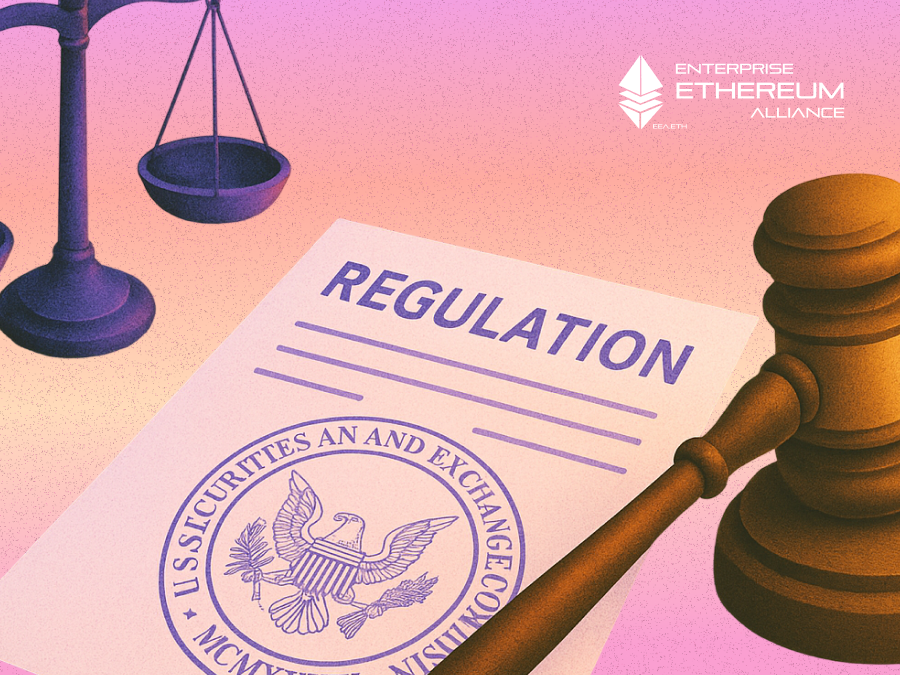Crosschain interoperability is emerging as one of the most crucial features of blockchain technology.The growing and pressing demand for interoperability solutions has led to a number of implementations, mostly crosschain messaging and crosschain bridging infrastructure, often without proper understanding and/or considerations for associated risks and security challenges. Despite the nascent stage of the crosschain industry, there is currently +$20B of value bridged from Ethereum L1 alone. However, as highlighted in the article Chain Reaction: The Insanity of L1 Bridges (Cross-Chain Chaos) , there is a significant lack of economic and technical standards to safeguard that value.
At early stages of any innovative endeavor, the proliferation of designs and approaches is to be expected and welcomed. But, in order to become more robust and reliable the crosschain infrastructure industry would benefit from adhering to a common set of standards and guidelines.
The EEA Crosschain Interoperabiliy Working Group is composed of industry leaders and R&D experts developing the Crosschain Protocol Stack and associated specifications addressing the technical complexities and security considerations of crosschain implementations.
The Crosschain Protocol Stack defines a layered architecture with clearly defined interfaces between layers and has the following advantages:
Interoperability: Applications will work with a variety of Function Call implementations that will work with a variety of Messaging implementations.
Flexibility: Different Crosschain Message Verification techniques could be used for each blockchain, side chain, or roll-up used in an overall crosschain function call.
Infrastructure Reuse: Different Crosschain Function Call techniques can share the same deployed Crosschain Message Verification infrastructure.
Focus on what you are good at: Organizations can focus on creating solutions for a single part of the protocol stack. That is, rather than having to create the entire stack, a company might choose to focus on an application, a better Function Call approach, or some Messaging infrastructure.
Experimentation: Not having to build the entire protocol stack should make experimentation much easier
Overview of the current priorities:
As part of its work, the group is standardizing the General Purpose Atomic Crosschain Transaction (GPACT) protocol. This protocol allows arbitrary call trees to be executed across blockchains, providing atomic updates: Updates are applied to all blockchains the call tree executes on, or discarded otherwise. This protocol fits into the Crosschain Protocol Stack as a function call protocol.
In addition, a blockchain identifier standard, to ensure all blockchains can be uniquely identified, is being worked on. Following the publication of its Crosschain Security Guidelines, the group is now developing a set of Crosschain Decentralization Guidelines.
What is coming next?
The EEA Crosschain Interoperability Working Group will be starting a testing phase with vendors in June 2022.
Infrastructure providers, application service providers and crosschain application providers are invited to express interest in participating in the crosschain interoperability testing using the EEA Crosschain Protocol Stack.
Participants may consider the following commercial opportunities:
For infrastructure providers it offers the opportunity to charge for enterprise-grade components/modules operationalizing the different layers of the protocol, such as crosschain messaging or crosschain function calls
For application service providers it gives the opportunity to charge for frameworks and tooling facilitating the development of crosschain applications compliant with the protocol
For crosschain application providers it presents the opportunity to facilitate the commercialization of protocol-compliant enterprise crosschain applications to enterprise customers
In addition, the EEA Crosschain Interoperability WG is collaborating with the EEA Community Projects L2 WG to evaluate if the GPACT protocol can transfer complex digital assets between L2 networks. For more information, please refer to L2/Sidechain <-> L1 and L2/Sidechain <-> L2/Sidechain Bridging Digital Assets with Residuals and to Call to Action for L2 <-> L2 Interop Testing for those organizations .
The EEA welcomes additional input on this important work and participation in the Crosschain Interoperability Working Group. Here’s more about who should join and how to get involved:
Non-EEA Members:
If you are interested in the work of the EEA Crosschain Interoperability Working Group and would like to contribute, please contact [email protected] and visit the EEA Crosschain Interoperability WG’s page: https://entethalliance.github.io/crosschain-interoperability/ .
EEA Members:
Please contact the EEA Secretariat or your member council representative. You can also log into the Member Collaboration site and join the working group to receive future meeting invitations.
Learn more about becoming an EEA Member and be sure to follow us on Twitter, LinkedIn and Facebook for all the latest.
By The EEA Crosschain Interoperability Working Group


